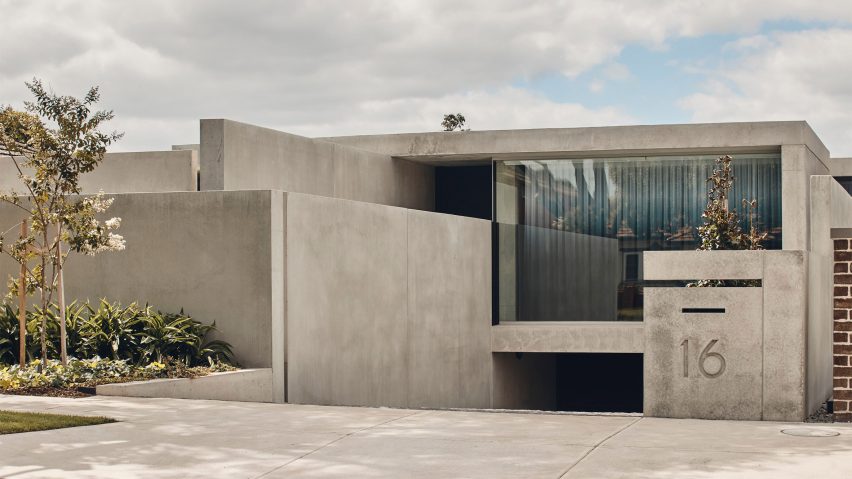
FGR Architects hides Melbourne house behind high concrete walls
Austere concrete walls create labyrinthine paths and pockets of greenery around this home in Melbourne, Australia, which was designed by local practice FGR Architects.
Named The Courtyard Residence after the large garden space and swimming pool at its centre, FGR Architects organised the five-bedroom home as a "layering" of spaces, creating a buffer between the street and the interior's calm, minimal living areas.
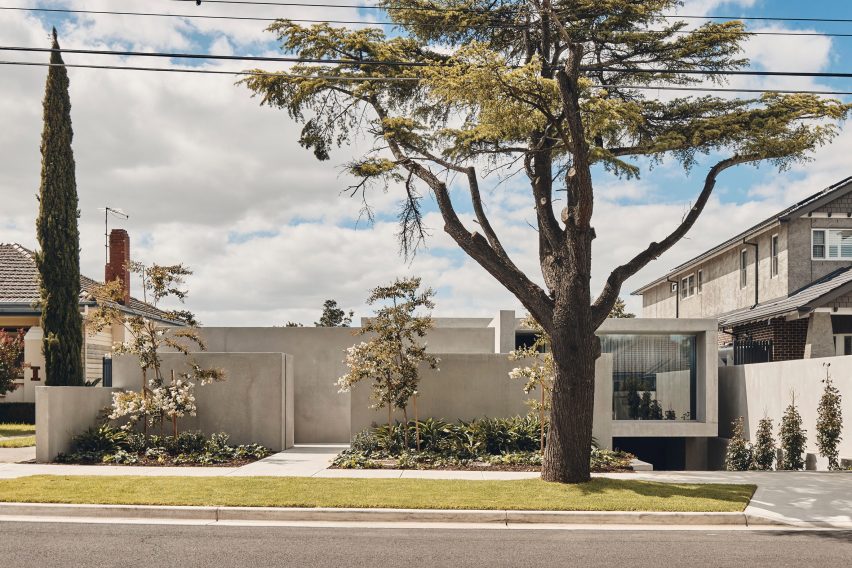
"The Courtyard Residence resembles a rectangular origami of concrete and glass. The project's ambition is a design of calm expression, heightened experience and seamless function," explained the practice.
"Concrete geometry and bespoke glass apertures deliver privacy and prismatic delight, [and] an understated street elevation with implied, layered volumes realises a heightened sense of intrigue and wonder."
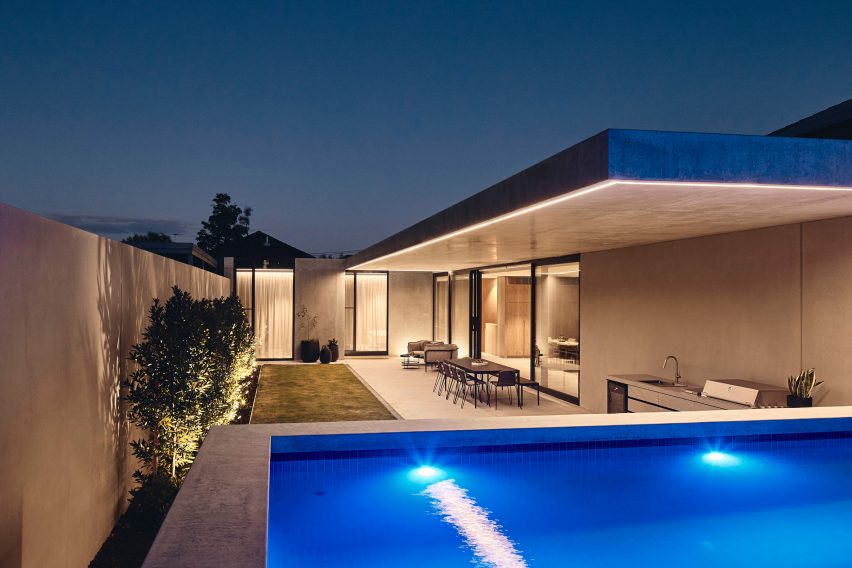
The high, monolithic concrete walls create a narrow entrance path at the front of the home, alongside a ramp that leads down to a basement parking space.
The long, narrow plan is organised with an open living, dining and kitchen area at its centre, flanked on either side by bedrooms, bathrooms and a small snug area at the front of the home that overlooks the street through a large window.
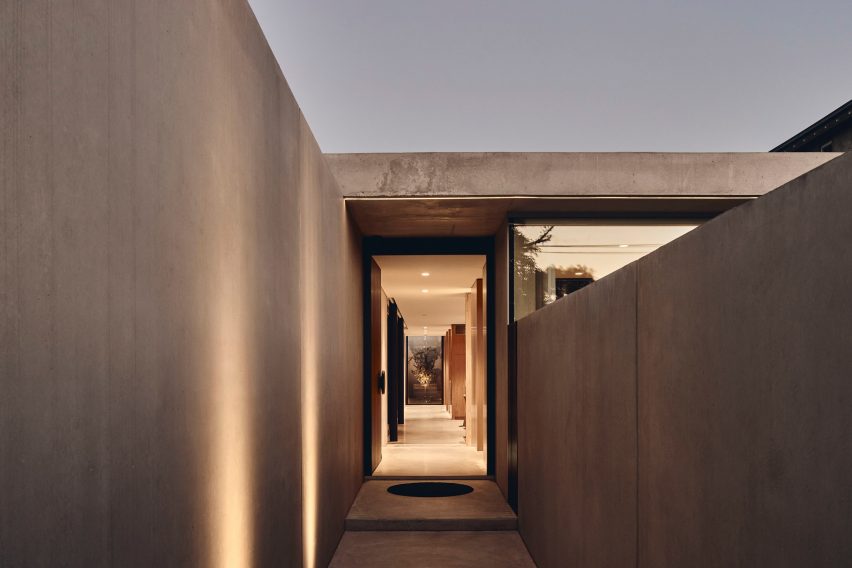
Full-height sliding glass doors allow the central living areas to be completely opened onto the external courtyard, where a paved terrace with an outdoor cooking area is sheltered by a large concrete canopy.
"Despite its heroic elements, the house transcends its gallery-like scale and functions as a series of beautifully proportioned living spaces," described the practice.
"Flexible options for opening and closing interiors with sliding glass walls makes for an immersive connection with the pool, courtyard and sunlight."
"Equally, the house can be closed down as required to mediate harsh weather and optimise thermal performance," the practice continued.
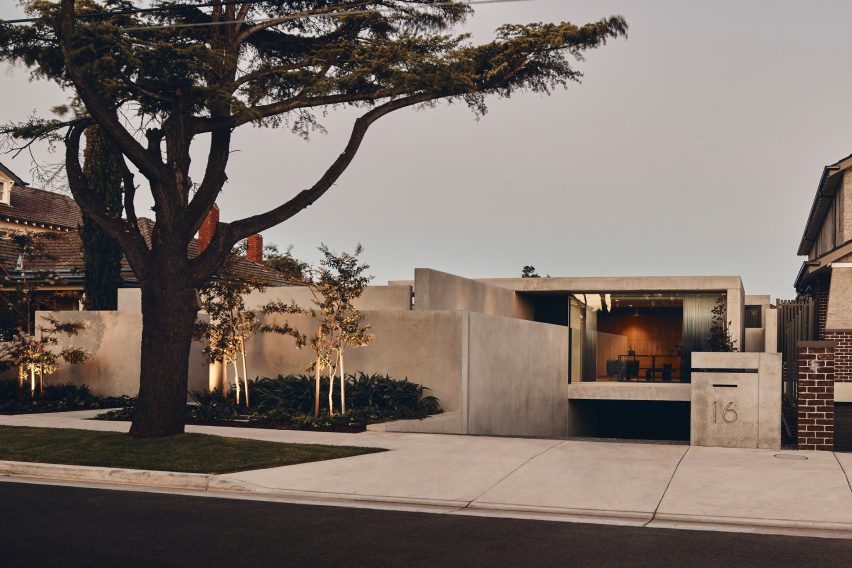
The exposed concrete used for the home's structure has been burnished both inside and out, and has also been left exposed in large sections of the interior walls to create a feeling of continuity.
This rougher finish is complemented by wooden panels and large wooden storage areas in the living spaces and a marble island in the kitchen.
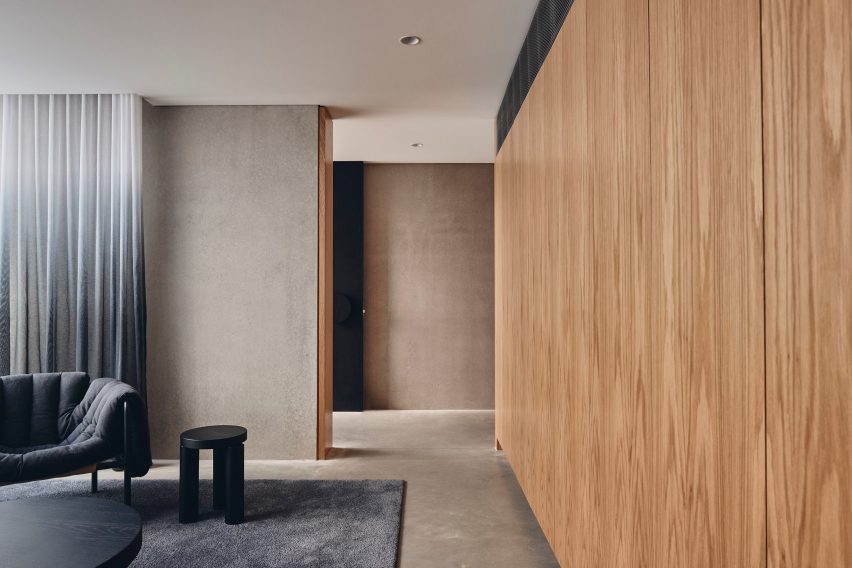
"Reflection and delight are contrasted by the monumental energy of matte and polished concrete," described the practice.
"Muted surfaces celebrate a sophisticated rawness throughout, supported by the evolving dance of light, shadow and reflection."
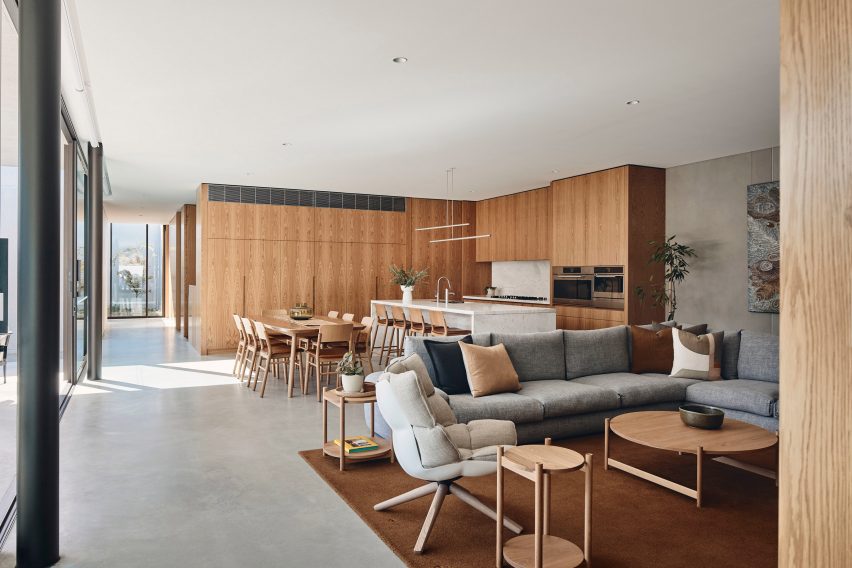
Melbourne-based FGR Architects was founded by Feras Raffoul in 2003 and works across architecture and interior projects.
Other homes recently completed in Melbourne include a dwelling organised around a lush green courtyard by BKK Architects, and the transformation of a brick terrace into a contemporary family home by Angelucci Architects.